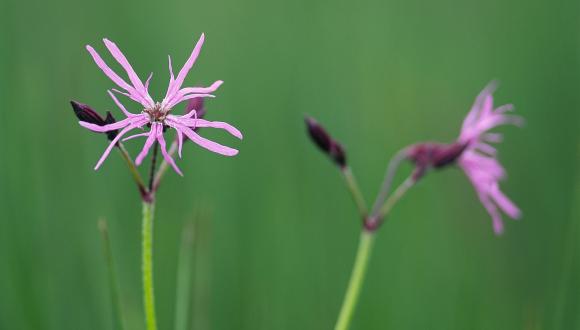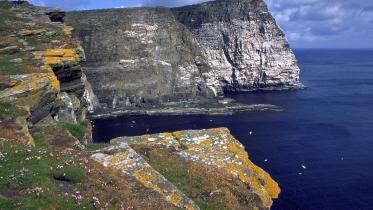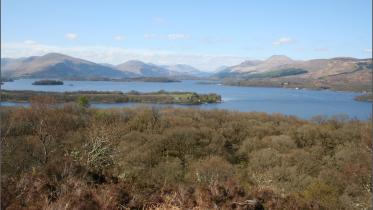SPANS Scotland's People and Nature Survey 2017/18 - Summary report - The benefits associated with visiting the outdoors
1. Background
This summary report on the benefits which people associate with visiting the outdoors is one of a series describing how people in Scotland use, value and enjoy the natural environment. It uses data from Scotland’s People and Nature Survey (SPANS), conducted in 2013/14 and 2017/18, and historical data from the Scottish Recreation Survey (ScRS), conducted annually between 2003 and 2012.
The research methodology used for SPANS is identical to that used for the ScRS meaning that data from both surveys are directly comparable. As the survey findings are based on interviews conducted with a representative sample of adults living in Scotland, all estimates are subject to a margin of sampling error, see SPANS Technical Report.
2. Definitions
In SPANS and the ScRS the term ‘outdoors’ includes mountains, moorland, farmland, forests, woods, rivers, lochs and reservoirs, beaches and the coast and open spaces in towns and cities. ‘Visits to the outdoors’ refers to leisure trips taken from home or while away from home on holiday, provided the holiday was in Scotland. ‘Outdoor recreation’ is defined as any non-motorised activity carried out for leisure purposes. It can include informal everyday activities (e.g. walking the dog, family outings) as well as a range of other types of activities such as cycling, hill walking or watersports).
3. Why are outdoor visits important?
Enjoyment of the outdoors, including greenspaces in towns and cities, the countryside around urban areas and more remote and wild areas of land and water, can help deliver many social, environmental and economic benefits. These include better health and well-being, an improved quality of life, greater empathy with the natural world, wider use of sustainable forms of transport such as walking and cycling and economic benefits derived from expenditure incurred by outdoor visitors. Increasing the proportion of adults visiting the outdoors at least once a week and ensuring that the benefits are shared by everyone in Scotland is a key target of the Scottish Government which measures progress via its National Performance Framework.
4. How frequently do people in Scotland visit the outdoors for recreation?
Most people in Scotland visit the outdoors for leisure and recreation with just over half visiting on a regular weekly basis.
The proportion of adults visiting the outdoors in 2017/18 (82%) is the same as in 2013/14; the proportion of adults visiting the outdoors on a regular weekly basis has, however, increased significantly (up from 50% in 2013/14 to 57% in 2017/18) as has the total number of visits taken (up from 396 million in 2013/14 to 547 million in 2017/18).
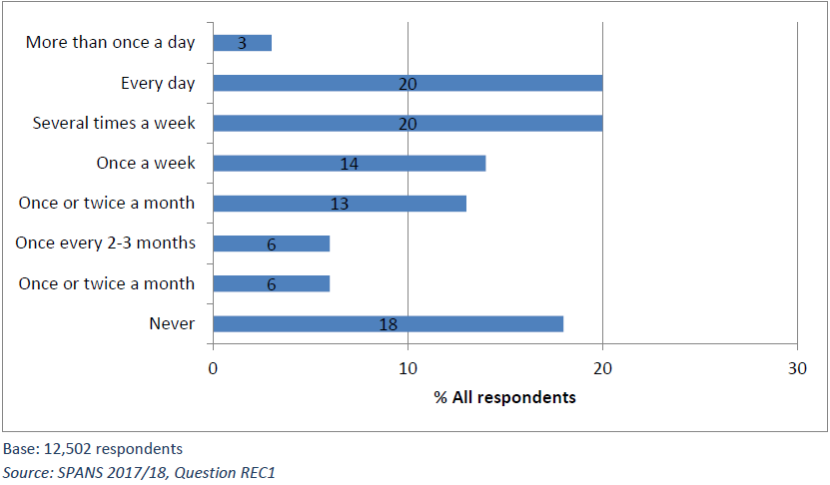
Between May 2017 and April 2018, 82% of adults in Scotland visited the outdoors, taking an estimated 547 million outdoor visits. Just over half of all adults visited the outdoors at least once a week during this period (57%), including 23% who visited every day. A quarter of adults visited less frequently than once a week (25%) and almost a fifth didn’t visit the outdoors at all (18%).
5. Reasons for visiting the outdoors
Dogs play a significant role in getting people outdoors on a regular basis: more than half of those who visit the outdoors on a daily basis, for instance, are motivated by walking a dog (54%). And more than half of the outdoor visits taken by people with a long-term illness or disability involve dog walking (55%).
Health and exercise is more likely to be a motivating factor among people in the AB social grade, older people aged 55 and over and people living in rural areas.
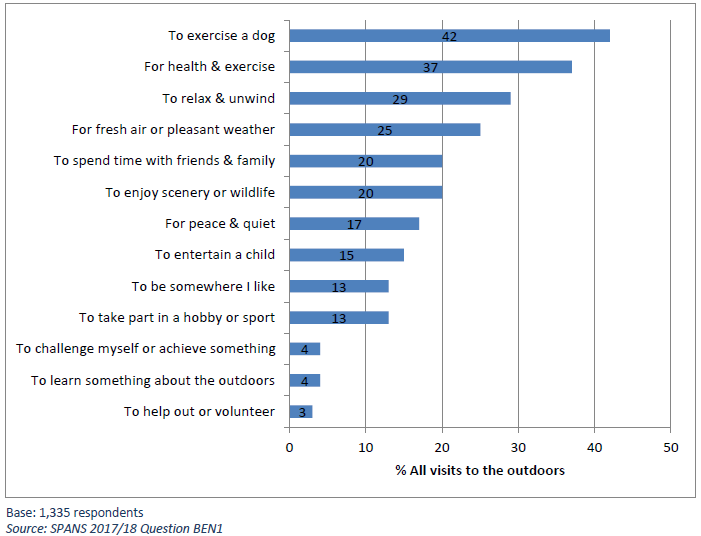
As shown in Figure 2 people in Scotland visit the outdoors for a variety of reasons but ‘dog walking’ (42% of outdoor visits) and ‘health and exercise’ (37% of outdoor visits) are mentioned most frequently. The positive contribution which visiting the outdoors can make to mental health and well-being is illustrated by the fact that almost a third of outdoor visits are taken to relax and unwind (29%).
6. Why do some people never visit the outdoors?
Around a third of adults in Scotland rarely or never visit the outdoors for recreation (see Figure 1). Men, people who work full-time, people with children in their household and those aged under 55 were more likely to mention lack of time; older people aged 55 and over, people who are not in paid employment and those in the DE social grade were more likely to mention poor health. Social grade is a household classification system based on the occupation of the Chief Income Earner in the household: AB - higher and intermediate managerial, administrative and professional; C1 - supervisory, clerical and junior managerial, administrative and professional; C2 - skilled manual workers; DE - semi-skilled and unskilled manual workers, casual and lowest grade workers, state pensioners and others who depend on the state for their income.
There has been very little variation over the last decade in the reasons people give for not visiting the outdoors
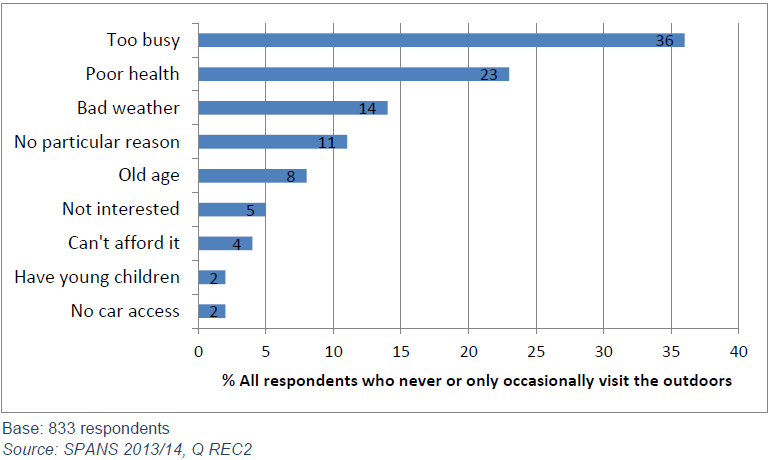
In 2013/14* the main reasons respondents gave were lack of time (36% of respondents), poor health (23%) and bad weather (14%).
*This question was not included in SPANS in 2017/18
7. What benefits do people feel they derive from their outdoor visits?
While the benefits of visiting the outdoors are very widely acknowledged, respondents who described their health as ‘good’ and those without an illness or disability which affected their ability to participate, were generally more positive about the benefits they accrue.
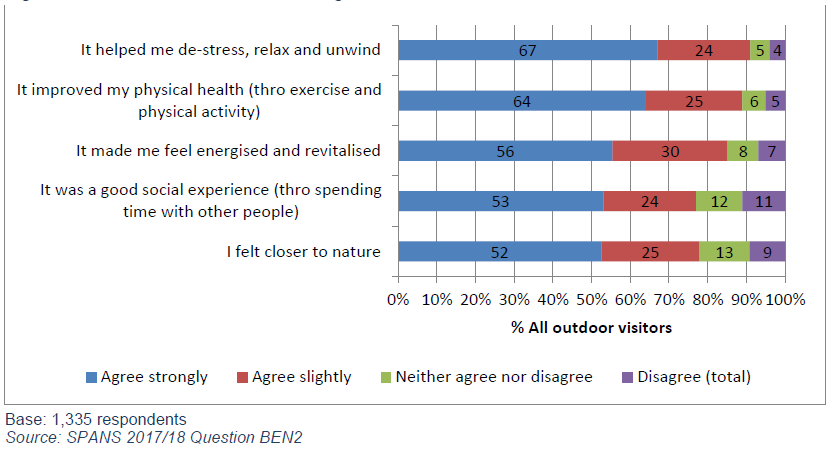
When prompted, most outdoor visitors agree that they benefit from their visits, with around 9 in 10 reporting improvements to their mental and physical health and an increase in their energy levels. In addition, a majority of outdoor visitors enjoy the social experience and the sense of being closer to nature.
8. How does the natural environment contribute to the attainment of the Scottish Government’s targets for physical activity?
In July 2011 the Scottish Government adopted UK-wide Physical Activity Guidelines. The guidelines for adults aged 19 to 64 recommend at least 150 minutes of ‘moderate’ intensity activity per week, accumulated in bouts of 10 minutes or more (equivalent to 30 minutes of exercise on at least 5 days of the week); or 75 minutes of ‘vigorous’ activity spread across a week; or a combination of both. These guidelines are referred to as the MVPA guidelines, i.e. Moderate or Vigorous Physical Activity.
The most recent Scottish Health Survey (2017), used by Scottish Government to monitor adherence to the guidelines described above, estimates that 65% of adults in Scotland (aged 16 and over) currently meet the recommended level of physical activity.
To understand the contribution outdoor exercise makes to the attainment of physical activity targets, SPANS respondents were asked about their use of the outdoors for physical exercise in the week prior to interview. Outdoor physical exercise was defined as: ‘activity which is enough to make you feel warmer, breath harder and make your heart beat faster’. It could include, therefore:
- visits to the outdoors for recreation where the main activity is aerobic (e.g. walking, cycling, kayaking);
- participation in outdoor sport (e.g. football, tennis)
- participation in other types of outdoor physical activity (e.g. gardening).
As shown in Figure 5, below, 70% of adults in Scotland use the outdoors for some sort of physical activity each week, including 31% of adults who meet the Scottish Government’s weekly recommended level of at least 150 minutes (or two and a half hours) of moderate physical activity simply through outdoor exercise. These findings are very similar to those reported in the 2013/14 survey and underline the significant role the natural environment plays as a setting for physical activity.
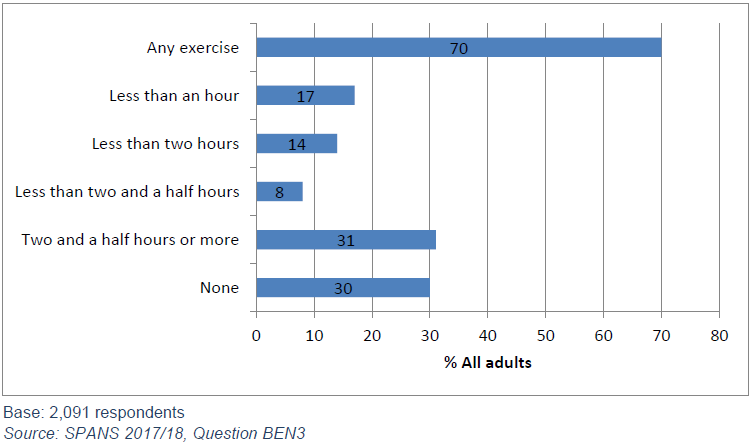
As shown in Figure 5 70% of adults in Scotland use the outdoors for some sort of physical activity each week, including 31% of adults who meet the Scottish Government’s weekly recommended level of at least 150 minutes (or two and a half hours) of moderate physical activity simply through outdoor exercise.
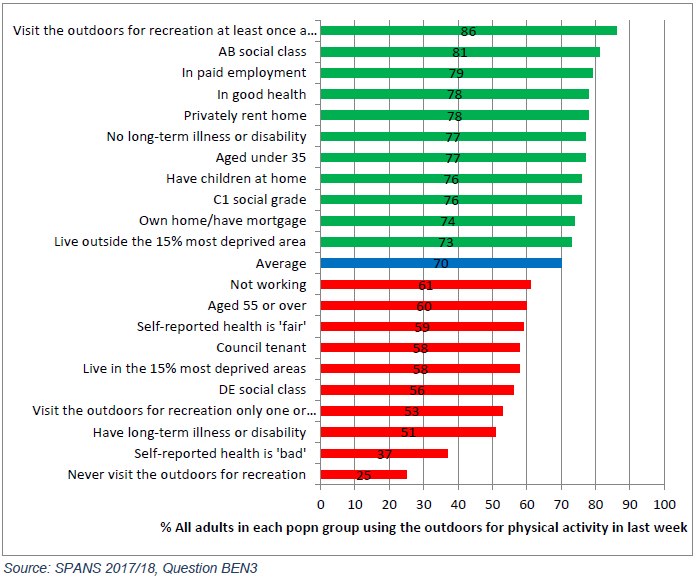
Figure 6 shows the groups within the Scottish population more and less likely than average to use the outdoors for physical exercise. Those more likely to participate in at least some outdoor physical exercise were: people who visit the outdoors for recreation at least once a week; more affluent people; younger people; and those in good health or without a long-term illness or disability. Conversely, less affluent people, older people, those in poor health or with a long-term illness or disability and those who rarely or never visit the outdoors for recreation were less likely than average to have used the outdoors for physical exercise.
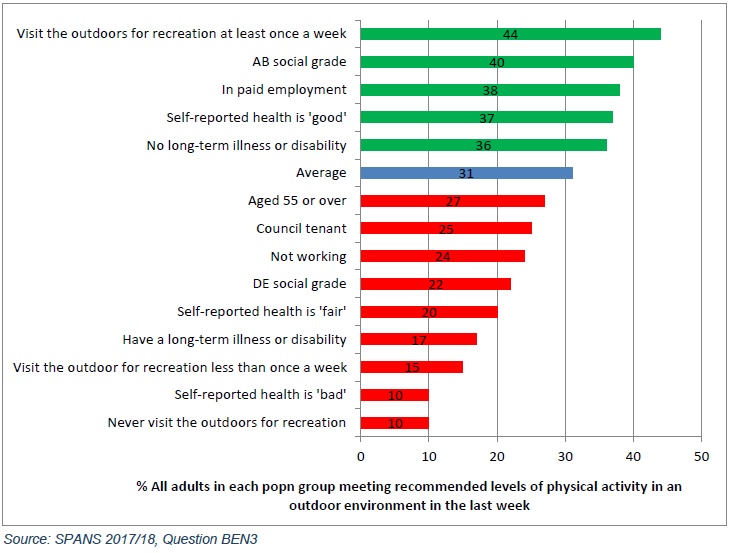
Figure 7 shows the groups within the population more and less likely than average to meet the Scottish Government’s recommended level of physical activity solely through outdoor recreation. Those more likely to meet the recommended level were: people who visit the outdoors for recreation at least once a week; more affluent people; and those in good health or without a long-term illness or disability. Conversely, older people, less affluent people, those in poor health or with a long-term illness or disability and people who visit the outdoors for recreation less than once a week were less likely than average to meet physical activity targets while out of doors.
Further information about SPANS and other surveys commissioned by NatureScot is available on the NatureScot website.
Published: 2018
